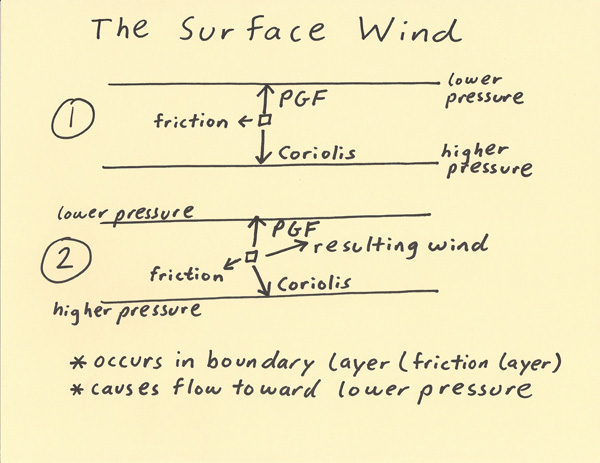
The surface wind is the balance of forces on the wind that occurs at and near the Earth’s surface. The contrast to the geostrophic wind is that the surface wind introduces the force of friction. In the diagram below labeled (1) we start with geostrophic balance and introduce friction. Friction is a force that slows the wind and this is why the friction vector is in the opposite direction to the resulting wind labeled on (2). When friction slows the wind it causes a reduction in the Coriolis force since the magnitude of the Coriolis force is directly related to the wind speed. Although the Coriolis force decreases, the Pressure Gradient Force (PGF) stays the same. This results in an imbalance between the Coriolis and Pressure Gradient Force. The PGF has a greater magnitude as compared to Coriolis. This results in the wind crossing the isobars at an angle from higher pressure toward lower pressure. In the diagram (2), it shows the balance of the forces between Coriolis, friction and PGF along with the resulting wind. The result is that at the surface, air flow convergences into low pressure systems and divergences from high pressure systems.  |